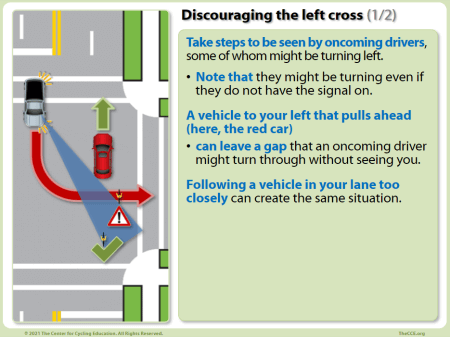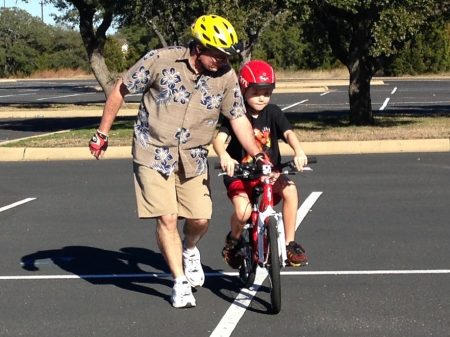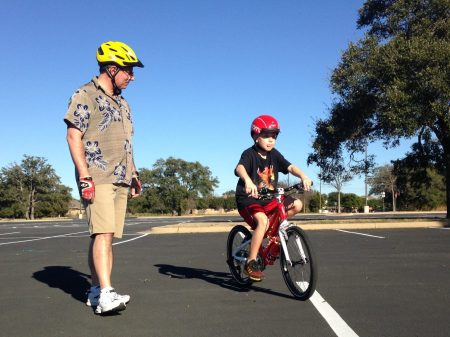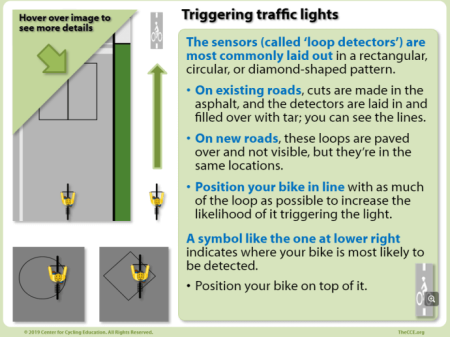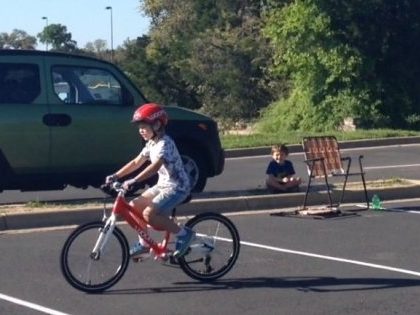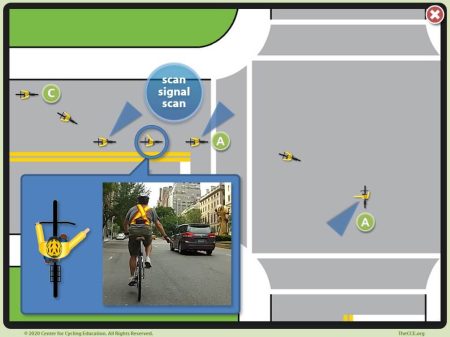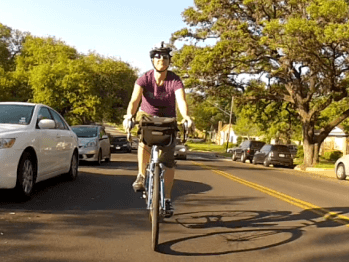Simple rules to help keep you on the straight and narrow.
These principles are taught in cycling courses around North America, and were first put forward by John Forester—the author of ‘Effective Cycling’. These apply to all road users, regardless of the type of vehicle they are operating.
1. Ride with (not against) traffic.
- Never ride on the left facing traffic.
- For kids and adults, riding on the sidewalk in many situations is more dangerous than riding on the road, for a number of reasons. There is no way to ride on the sidewalk and be ‘out of traffic’, as every driveway is an uncontrolled intersection and crosswalks are hazardous to ride in. Learning to ride on the road should be done under supervision in controlled conditions.
2. Yield to crossing traffic when appropriate.
- The person on a minor street yields to those traveling on a major street.
- At uncontrolled intersections (e.g., 4-way stops), the person who arrives last yields to the other(s). If two people arrive at the same time, the person on the left yields to the one on the right (remember “right of way”). There are some states where this is not coded in law (e.g., Texas), but is a generally understood approach. However, don’t assume that because you are on the right, the other person will yield the right of way.
3. Yield to same-direction traffic when appropriate.
- The person changing his or her line of travel (moving into another lane) must yield to others already in that lane, or line of travel.
- If you’re riding near the curb in a lane you can safely share with motor vehicles(stay about a yard/metre out), and traffic is safely passing you on the left within your lane, treat this as two lanes of travel. If you need to move out and around an obstacle at the side of the road, yield to drivers coming from behind.
4. Position yourself at intersections according to your intended direction beyond the intersection.
- Turn left from the center or from the left third of the roadway (not the right). Turn right from the center or from the right third of the roadway. Travel through city (not high-speed) intersections in the middle of the lane (in wide lanes, you can ride through on the right side, but watch for oncoming motorists, and drivers from behind, who might turn across your path).
- At a multiple-lane intersection, choose the rightmost lane that serves your intended destination.
5. Position yourself between intersections based on your speed relative to the rest of the traffic, and the usable width of the road.
- Slower traffic stays to the right, and faster traffic passes on the left. If you are traveling at the same speed as the rest of traffic, ride in the center of the lane. Passing on the right is allowed in certain instances, but only do so if it’s safe (watch for vehicles turning right, across your path, or for opening passenger doors in stopped vehicles—it happens!).
- If the lane is too narrow to safely share with other road users, ride in the middle of the lane, or find another route. As a rule of thumb, to be safe you need about a yard/metre of clearance between you and motor vehicles, and between you and the curb.
Applying these principles properly and safely takes training and attention. These principles are provided for information only and are not intended as a comprehensive how-to guide.
